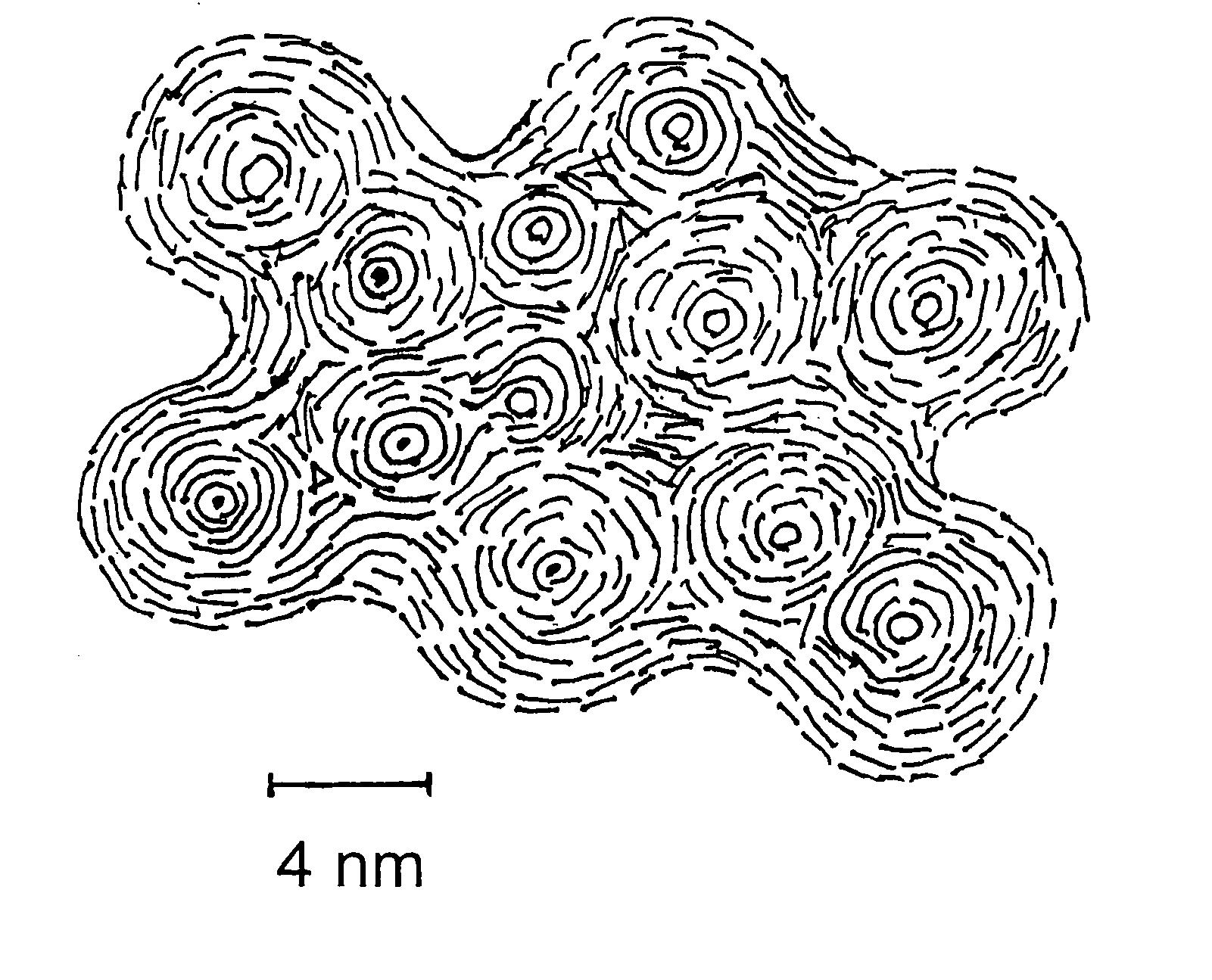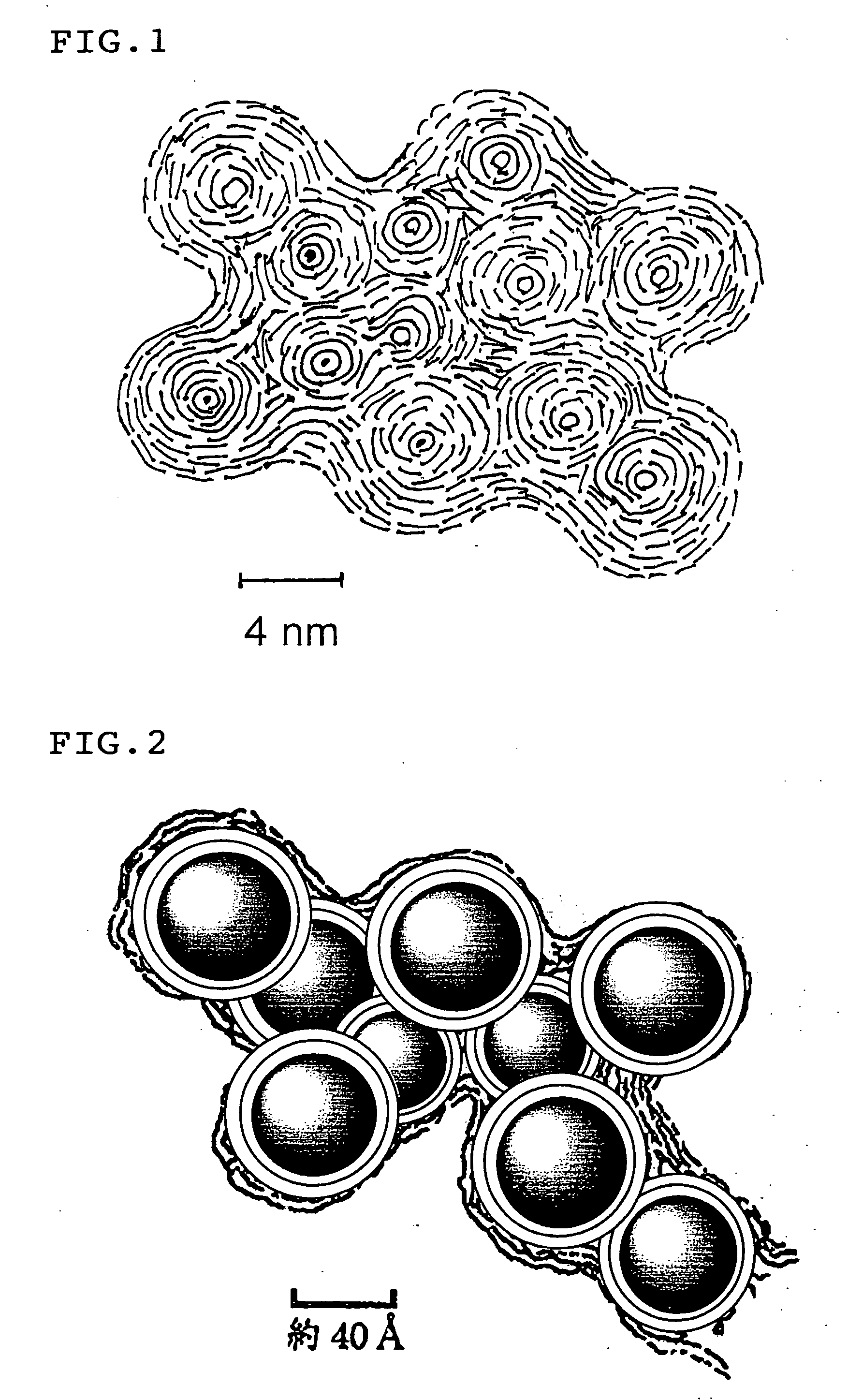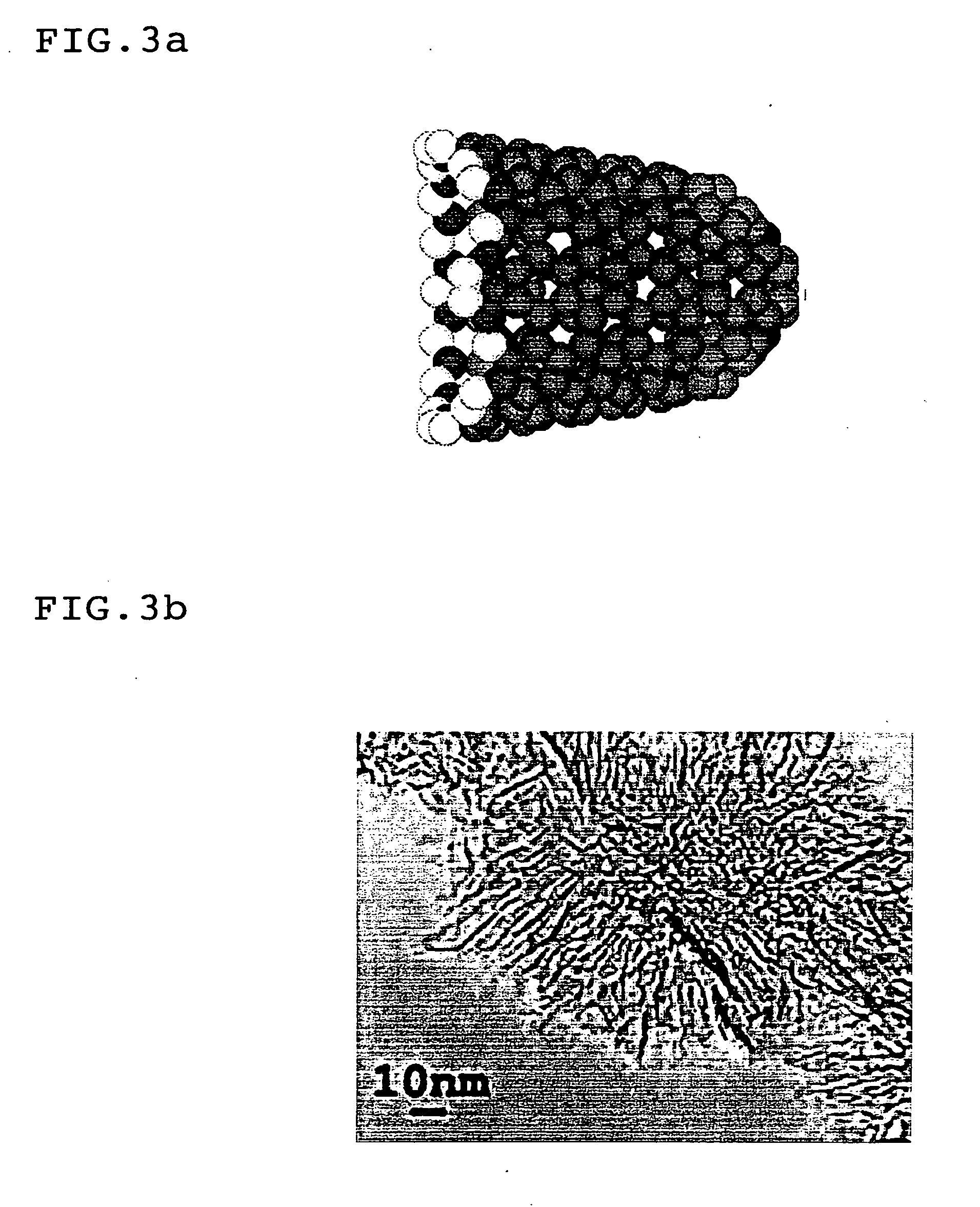Ultra-dispersed nanocarbon and method for preparing the same
a nano-carbon and ultra-dispersed technology, applied in the field of ultra-dispersed nanocarbon and method for preparing the same, can solve the problems of difficult for the primary particle of nanometer-sized carbon to present its own functional properties, the self-organizing mechanism of the nanometer-sized particle is a fatal obstacle to the development of fundamental techniques in the field of nano-technology, and the solution has not yet been found
- Summary
- Abstract
- Description
- Claims
- Application Information
AI Technical Summary
Benefits of technology
Problems solved by technology
Method used
Image
Examples
example 1
[0137] Used in this Example 1 was a ball mill shown in FIG. 7. Filled to a 70 vol. % of a capacity of a milling container 1 of this ball mill were silica balls 3, wherein the silica balls 3 were prepared using the so-called plasma melt method. Filled together with the silica balls 3 in the milling container 1 were: pure water; and, the agglutinate assemblies or powder of the “detonation method” type nanodiamond, which powder was commercially available and dispersed in the pure water as a workpiece powder 4 to be milled or pulverized. Under such circumstances, a stirring blade of an agitator 2 was rotatably driven at a peripheral velocity of 10 m / s to perform its stirring operations.
[0138] After completion of such stirring operation, the milling balls 3 were filtered with the use of a filtration liquid and removed. As a result, a slurry assuming a light gray color was obtained, wherein the slurry was a mixture of washing water and the filtration liquid. The slurry was stable in prop...
example 2
[0144] A black powder of commercially available fullerene C60 was refined twice by vacuum sublimation, where in each vacuum sublimation was performed at a temperature of 600° C. for 30 minutes under a pressure or vacuum of 5×10−6 mmHg. It was confirmed, by reversed-phase HPLC (High-Performance Liquid Chromatography) column of Tosoh Co., Ltd. make, that the thus refined C60 powder did not show any peak representing the presence of C70 fullerene, wherein: column crest Pak C18T-5, L250×φ4.6 mm; migration phase was of toluene / ethanol=1 / 1 in volume ratio with a flow rate of 1.0 ml / m at a temperature of 10° C.; a detection wave length was a value of 335 nm; and, a period of time in which C60 fullerene flowed away was 12.6 minutes.
[0145] A 5 grams of the thus refined C60 powder was dispersed into a 70 ml of pure water to prepare a mixture, which mixture was then stirred by a household mixer. After that, the thus stirred mixture was put in a 250 W-powered ultrasonic washing bath for 10 min...
example 3
[0147] A 10 grams of commercially available ultra-abrasive carbon black (called “Toka Black 8000F”) was mixed with a 70 ml of water to prepare a dispersion. In the same manner as that described in the Example 2, a preliminary dispersion treatment of this dispersion was conducted to prepare a uniform suspension. After that, a 7 ml of this suspension was picked up and subjected to a ball milling treatment in the same condition as that employed in the Example 1. after completion of this milling treatment, the milling balls were removed from the milling container using a filter.
[0148] Remained in the milling container was a slurry with a gray color in appearance. This slurry was mixed with a washing liquid to prepare a 30 ml of another slurry, which was inspected using the DLS method to determine a mean diameter of colloidal particles in the particle size distribution, wherein the mean diameter was a value of 32 nm.
[0149] After that, the thus inspected slurry was subjected to an ultra...
PUM
| Property | Measurement | Unit |
|---|---|---|
| diameter | aaaaa | aaaaa |
| velocity | aaaaa | aaaaa |
| diameter | aaaaa | aaaaa |
Abstract
Description
Claims
Application Information
 Login to View More
Login to View More - R&D
- Intellectual Property
- Life Sciences
- Materials
- Tech Scout
- Unparalleled Data Quality
- Higher Quality Content
- 60% Fewer Hallucinations
Browse by: Latest US Patents, China's latest patents, Technical Efficacy Thesaurus, Application Domain, Technology Topic, Popular Technical Reports.
© 2025 PatSnap. All rights reserved.Legal|Privacy policy|Modern Slavery Act Transparency Statement|Sitemap|About US| Contact US: help@patsnap.com



